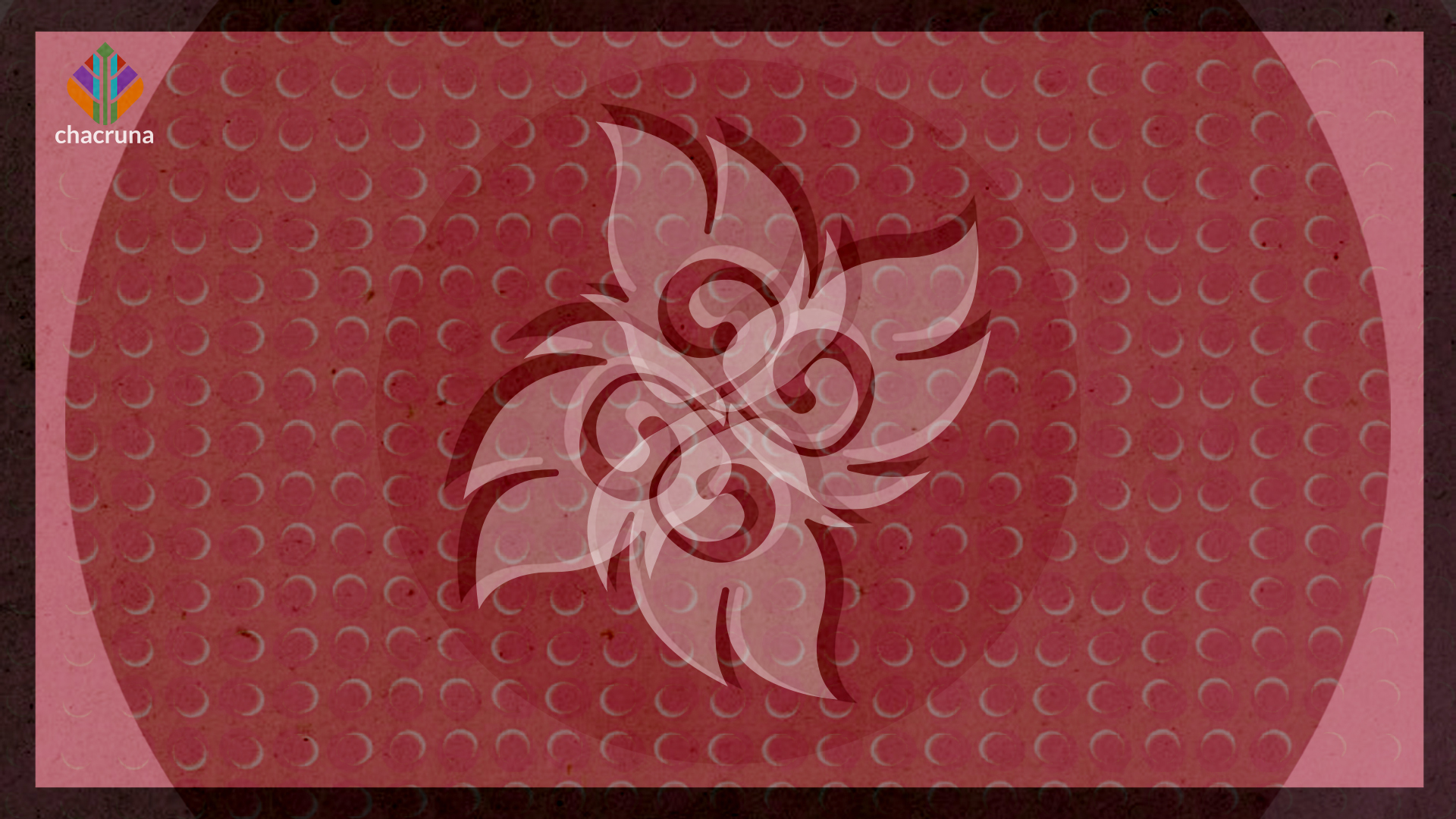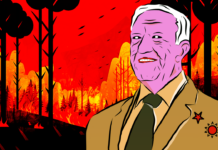- Dating My Ayahuasca Shaman: Sex, Power, and Consent - September 28, 2020
I engaged in what I thought was a consensual relationship with my shaman. After many years, I have realized that what I really needed was for him to hold space for me, not have sex with me. But, at the time, the interaction was confusing, especially since I had just ingested a powerful hallucinogenic. Following an intense week of ceremonies at a private retreat center, my shaman approached me to offer connection and physical touch. I consented. I felt moved, even flattered.
I was sitting near the firepit trying to warm up; the retreat had taken place in winter months, and I was exhausted and cold after the evening’s ceremony. I wasn’t ready to settle into bed in the dormitory space yet because I was still having intense visuals, so I situated myself in front of the heat to ground myself. My shaman appeared with the offer of a blanket, which felt like a warm, welcomed gesture. The gesture escalated quickly, from a blanket to a hug, from a hug to a kiss. And, because my nervous system was so activated and my senses were heightened, all of this felt good. My judgment, on the other hand, was still impaired.
But what I’ve realized is that, because of a shaman’s perceived expertise, a participant often places a great deal of trust in them to hold a safe space.
Though I didn’t know anyone at the retreat center, I went there based on the recommendation of a trusted female friend. This, paired with my willingness to put my faith in the man who was guiding the ceremony, seemed enough at the time to allow me to trust my own actions. After all, I trusted him earlier in the evening when he helped me by singing me through a difficult and embarrassing purge. So, when it came time to trust his gestures afterwards, I did. The intimacy seemed consensual. But what I’ve realized is that, because of a shaman’s perceived expertise, a participant often places a great deal of trust in them to hold a safe space. A shaman’s responsibility is to maintain professional boundaries and understand the sensitivities that come alongside participants’ experiences in ceremony space, and this safekeeping can be violated if the healer-participant power dynamic is exploited.
Power and Responsibility
I was not completely unaware of these power dynamics, and I had a mixture of feelings following the initial physical interactions we had, despite how good they felt. Afterward, I pushed explicit dialogue with him regarding consent, power dynamics, and being under the influence of a powerful psychedelic. But the intimacy that followed my experience had already imprinted on me, and it seemed impossible to unravel myself from him. We continued to connect. The connection evolved into a relationship. In retrospect, I see that the initial ease of these conversations helped bolster my denial that the developing scenario was less than ideal. As a practicing shaman, it was his responsibility to initiate these discussions with me. Ideally, these conversations would have taken place when we were both sober, rather than post-ceremony, when ceremony participants often feel open and are still processing their experience.
It is not uncommon for people to experience increased libido or sexual thoughts during an ayahuasca ceremony. However, communities where ayahuasca is used often adhere to guidelines recommending decreasing sexual activity pre and post ceremony as part of a dieta. In the hours before I was approached with an offer of physical contact by my shaman, I was experiencing wildly visceral sexual hallucinations. My libido was heightened, and this was not a clean and integrous lead-in to physical contact with the person who was facilitating my experience. Ideally, he would have anticipated and recognized the potential for my increased libido during the ceremony, and left me well alone.
In the years following, I see that I had been vulnerable and open to suggestion in those initial moments when the connection was being formed, and I wondered if the other women experienced this with him as well.
A Widespread Pattern
After my relationship with him, I learned that he repeated this healer-participant relationship pattern. Although I maintain that our relationship was by-and-large consensual, the continued pattern of his relationships seemed worrisome to me. In the years following, I see that I had been vulnerable and open to suggestion in those initial moments when the connection was being formed, and I wondered if the other women experienced this with him as well. I felt similar to Emily Sinclair (2019) when she stated, “I did not realize at the time that this behavior was widespread but, instead, blamed myself for being naïve.”
One shaman asked a participant for a date after the participant shared to the group in the integration circle the deep realization of longing for a life partner.
In my Western community, I have witnessed a handful of shamans act outside of propriety. I have listened to firsthand accounts from both female and male survivors who have been harmed by sexual abuse in these contexts. One shaman slept in a bed next to a participant after a ceremony to help calm their nerves. One shaman bragged that a new participant had the “hots” for him. One shaman asked a participant for a date after the participant shared to the group in the integration circle the deep realization of longing for a life partner. One shaman “healed” participants’ sexual trauma by having sexual contact with them. One shaman used spiritual bypassing in hopes that his history of sexual assault would be dismissed, ignored, or dealt with outside of legal channels.
Sexual Assault and Spiritual Bypassing
The New Age movement has a tendency to sanitize the experience of ayahuasca, propagating an overreliance on a “love and light” mentality that can lead to spiritual bypassing. This can deflect responsibility for the accused, resulting in survivors finding it difficult to make strides toward criminal investigation. It can also cause challenges as survivors try to heal and make sense of their experience in a grounded way. The last-mentioned individual in question in the above paragraph responded to a public call-out by requesting community rather than legal counsel, referencing bestselling author Don Miguel Ruiz Jr.’s book based on Indigenous Toltec wisdom, The Four Agreements, one of which is, “Don’t make assumptions.” Later, he quoted abridged language of an Indigenous Hawaiian tactic of forgiveness and understanding, Ho’oponopono: “I love you, I’m sorry, please forgive me, thank you.” The use of this borrowed language in a context in which the use of Indigenous plant medicine has already been perverted to sexually abuse participants is particularly egregious.
In fact, there is a danger to thinking that only so-called “inauthentic” shamans may commit abuses, as it feeds into a tendency to exoticize and idealize Indigenous communities
There is less of an emphasis on this love and light mentality in the Amazon, as the darker sides of this multifaceted, powerful medicine are acknowledged and well-known. This is not to say that Indigenous communities do not face complaints of sexual assault—they certainly do. All shamans are human beings; whether they are practicing in private ceremonies, ceremonies sanctioned by religious institutions, or within Indigenous communities with long histories of ayahuasca use, human fault is possible. In fact, there is a danger to thinking that only so-called “inauthentic” shamans may commit abuses, as it feeds into a tendency to exoticize and idealize Indigenous communities. Daniela Peluso (2014) points out that Western shamans who have committed assault are commonly called “inauthentic” and “not real shamans” by bloggers, but this sort of language idealizes and “romanticizes the ‘other’” (p. 243).
Working Toward Accountability
Authenticity is irrelevant. Instead, possible explanations for the widespread increase in cases of sexual assault include both the need for secretive use of the medicine and the lack of an official organizational structure, making it more challenging to hold perpetrators accountable in sexual assault cases. Many of the cases mentioned above took place in small, private ceremonies held in places where ayahuasca use is illegal, which presents a challenge when it comes to accountability. Although such ceremonies have their own guidelines, ethos, and rituals, there are benefits to religious models; for example, the Santo Daime church, which has its own social mores that reinforce a shared set of values and measures for community safety. Such models based on religious doctrines have the ability to provide some harm-reduction strategies; however, it is also widely known and acknowledged that Santo Daime and other religious communities are not immune to instances of sexual assault. In a community for which use of this medicine is still largely unchecked and unregulated, organizing toward accountability and a strong, shared ethos is critical.
The Chacruna Institute is one organization that strives to bring awareness to cases of sexual abuse. Chacruna’s “Ayahuasca Community Guide for the Awareness of Sexual Abuse” outlines an array of common scenarios that may help ayahuasca communities feel more aware, resourced, and informed. And, in a companion to this resource, the Chacruna Institute details the current legal situations in a handful of South and Central American countries where ayahuasca is used. As we move forward into a future that will likely see an increase in the global interest and demand for ayahuasca, spreading awareness about safety precautions and the realities of sexual abuse in communities both Indigenous and Western will continue to be vital.
It took a great deal of time for my understanding of my relationship with a shaman to take the shape it has today. And, although I hold no grudge, I see now that the nurturing, connection, and intimacy that took place in the context of a sexual relationship would have been healthier, more honest, and more healing within a secure therapist-patient connection. My hope is that we, as a community, can learn the importance of maintaining such ethical dynamics, so that harms are minimized, healing is emphasized, and the patterns that were enacted in my relationship will not be repeated elsewhere.
Art by Mariom Luna.
References
Sinclair, E. (2019, November 22). Ayahuasca community outreach: Distribution of the guidelines for the awareness of sexual abuse in Iquitos, Peru. Chacruna.net. https://chacruna.net/ayahuasca-community-outreach-distribution-of-the-guidelines-for-the-awareness-of-sexual-abuse-in-iquitos-peru/.
Peluso, D. (2014). Ayahuasca’s attractions and distractions: Examining sexual seduction in shaman-participant interactions. In B. C. Labate & C. Cavnar (Eds.), Ayahuasca shamanism in the Amazon and beyond (pp. 231–255). Oxford, UK: Oxford University Press.
Take a minute to browse our stock:
Did you enjoy reading this article?
Please support Chacruna's work by donating to us. We are an independent organization and we offer free education and advocacy for psychedelic plant medicines. We are a team of dedicated volunteers!
Can you help Chacruna advance cultural understanding around these substances?














